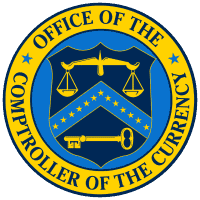Tear Down the Wall Between Banking and Commerce

 Earlier this week, the Acting Comptroller of the Currency, Keith Noreika, reignited one of the most hotly debated topics in financial regulation: the separation of banking and commerce. The doctrine prohibits nonfinancial firms from owning and operating banks, as well as commercial and investment banks from mixing activities, and was instituted under Banking Act of 1933 (commonly referred to as the Glass-Steagall Act), and the Bank Holding Company Act of 1956.
Earlier this week, the Acting Comptroller of the Currency, Keith Noreika, reignited one of the most hotly debated topics in financial regulation: the separation of banking and commerce. The doctrine prohibits nonfinancial firms from owning and operating banks, as well as commercial and investment banks from mixing activities, and was instituted under Banking Act of 1933 (commonly referred to as the Glass-Steagall Act), and the Bank Holding Company Act of 1956.
The United States is the only developed country in the world with such an antiquated system, yet it is rarely challenged. Speaking earlier this week at a conference in New York, Noreika asserted that such a status quo merely props up bureaucracies and serves incumbent firms’ interests, “without regard to why the separation exists in the first place or whether the separation has any usefulness for today’s economy.”
Noreika is spot on in his remarks. The firewall between commerce and banking has never made sense, and it has merely evolved to protect the very largest firms from competition.
My colleague John Berlau and I document this in regards to the infamous Glass-Steagall Act, which separated commercial and investment banking, in our paper “Why Wall Street Loves Glass-Steagall.” As we find, the Glass-Steagall Act systematically destroyed Main Street investment banking over its 66-year reign, relegating it to specialized firms in New York.
While the legislation was partially repealed in 1999, allowing commercial and investment banks to be owned by the same holding company, banks still cannot underwrite or deal in securities and investment banks still cannot accept demand deposits. This is despite overwhelming evidence to suggest that banks engaging in both commercial and investment banking are stronger and more stable.
The second aspect of the firewall is the prohibition of nonfinancial companies from engaging in banking under the Bank Holding Company Act. This means that household-names such as Berkshire Hathaway, Walmart, and Amazon cannot compete in the banking industry. As Berlau has further found, the distinction has had a detrimental effect on financial innovation, stability, and lowering costs for consumers. As Berlau writes:
Unlike virtually every other industrialized country, the U.S. effectively bans non-financial corporations from owning bank affiliates. This means the best-run American corporations, with expertise in areas important to banking like technology and supply-chain management, are locked out of the banking industry.
The separation is defended as a way to preserve the purity of banking from the corruptive influences of business. Yet in the many countries around the world, the practice is allowed with no such problem. For example, in the United Kingdom, the retail giant Tesco successfully offers banking and insurance services. Even more interesting is the fact that Walmart, an American company, operates a bank that issues credit cards in Canada and until recently ran a full-service bank in Mexico.
Universal banking, as it is known, is a perfectly safe and efficient model around the world. Yet it poses a threat to existing banks. It shouldn’t come as a surprise then that much of the banking industry opposes Noreika’s vision. The Independent Community Bankers of America quickly slammed the Acting Comptroller for the comment, for example. They have also long lobbied to end a loophole that would allow some corporations to operate an Industrial Loan Company, a type of nonfinancial firm that lends money. Yet this is nothing more than pure rent-seeking. Existing banks don’t want the competition from the fiercely competitive Silicon Valley, probably because they know that these firms, like Amazon or Apple, will run them out of business.
The separation of commerce and banking has little relevance in the 21st century. It is an outdated doctrine that has nothing to do with financial stability, and everything to do with protecting incumbent firms. It is refreshing to see the Acting Comptroller Noreika acknowledge this, sparking a long needed debate on the antiquated regulatory structure of the American financial system.